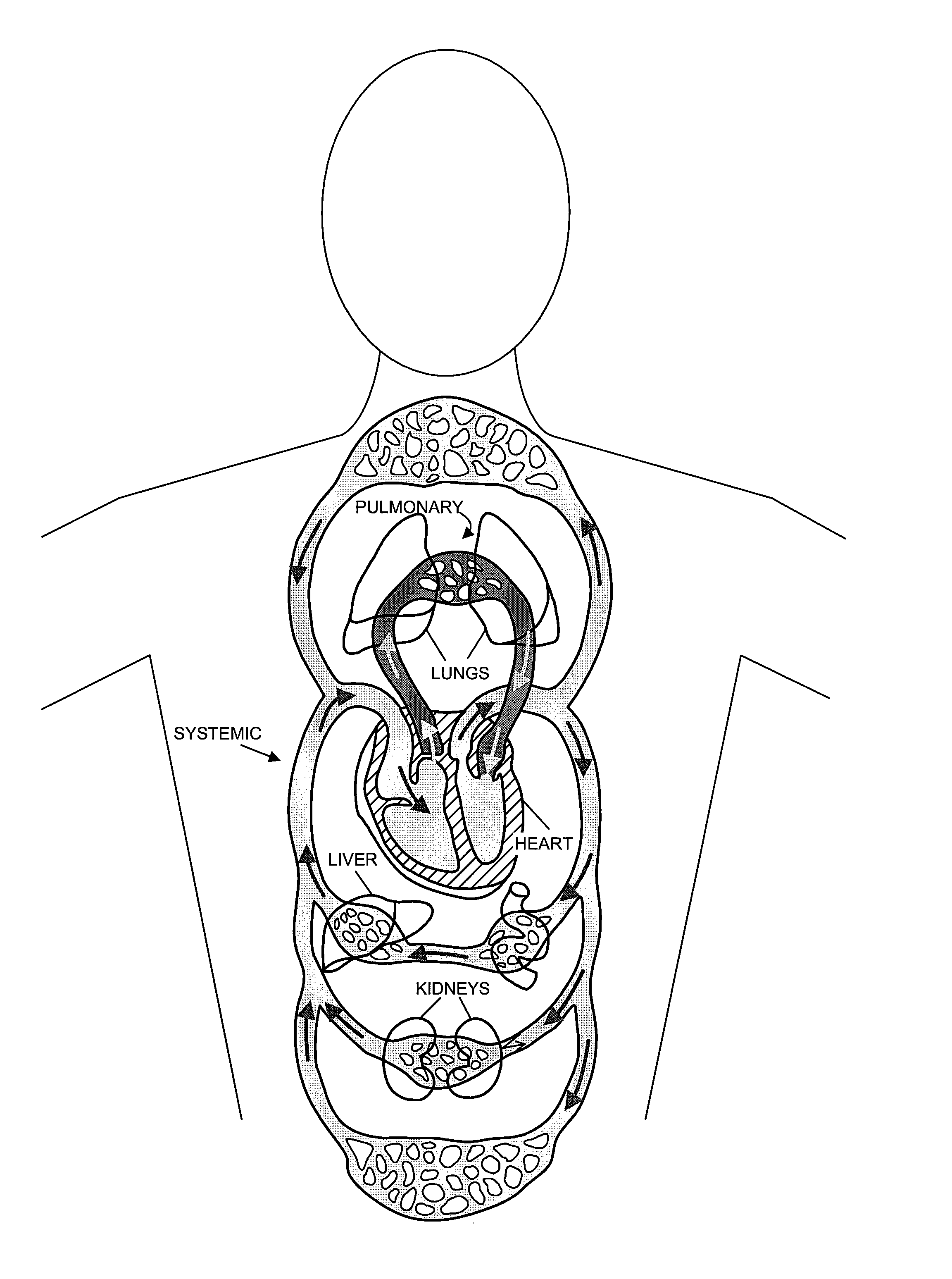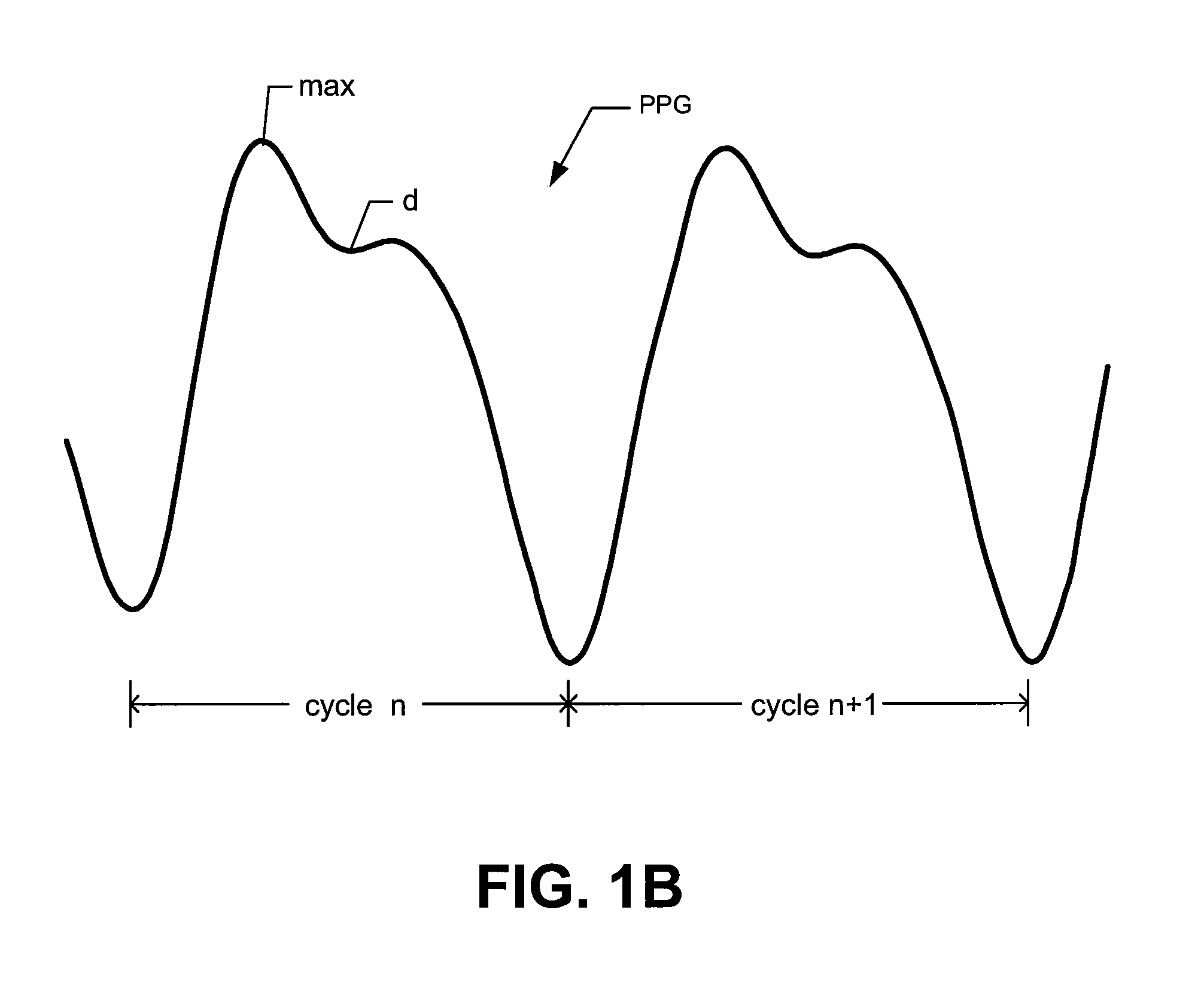Systems and methods for monitoring blood partitioning and organ function
a blood partitioning and organ technology, applied in the field of systems and methods for monitoring blood partitioning and organ function, can solve the problems of organ dysfunction and/or failure, insufficient warning, and inability to provide sufficient warning
- Summary
- Abstract
- Description
- Claims
- Application Information
AI Technical Summary
Benefits of technology
Problems solved by technology
Method used
Image
Examples
Embodiment Construction
[0034]Referring to FIG. 1, the human circulatory system includes both systemic and pulmonary circulation systems. The heart serves as a pump that maintains blood circulation. The pulmonary circulation system (darkly shaded path) supplies the lungs with blood flow, while the systemic circulation system (lightly shaded path) supplies blood to other parts of the body including the other vital organs (e.g., liver, kidneys) and non-vital organs (e.g., spleen) of the body. Both the pulmonary and systemic circulatory systems are made up of arteries, arterioles, capillaries, venules and veins. The arteries take the blood from the heart, while the veins return the blood to the heart.
[0035]Blood flow characteristics can vary with organ performance, and abnormalities in characteristics of blood circulation can be symptomatic of dysfunction and / or failure of the organ. Monitoring blood perfusion to a specific organ of interest can allow detection of abnormalities in characteristics of blood cir...
PUM
 Login to View More
Login to View More Abstract
Description
Claims
Application Information
 Login to View More
Login to View More - R&D
- Intellectual Property
- Life Sciences
- Materials
- Tech Scout
- Unparalleled Data Quality
- Higher Quality Content
- 60% Fewer Hallucinations
Browse by: Latest US Patents, China's latest patents, Technical Efficacy Thesaurus, Application Domain, Technology Topic, Popular Technical Reports.
© 2025 PatSnap. All rights reserved.Legal|Privacy policy|Modern Slavery Act Transparency Statement|Sitemap|About US| Contact US: help@patsnap.com



